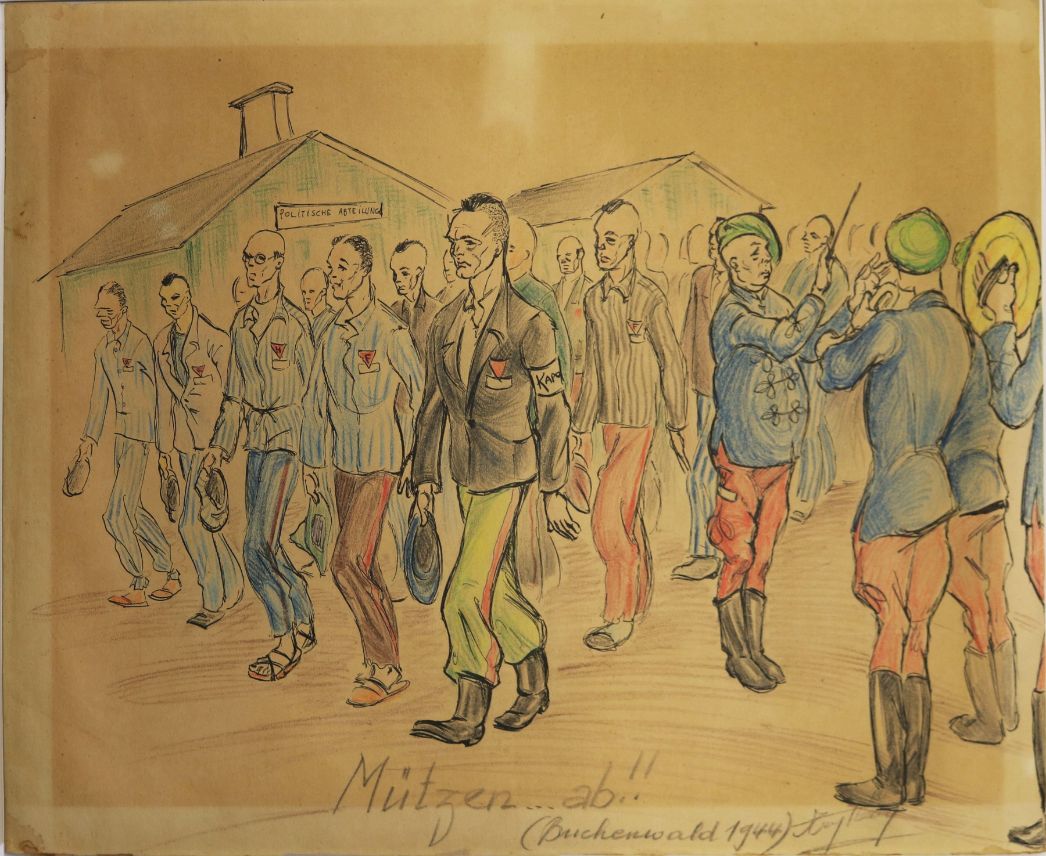
©Buchenwald Memorial
Conrad Finkelmeier was committed to the Buchenwald concentration camp as a political inmate in the autumn of 1941. He was 53 years old at the time. Like most of his fellow inmates, he had to spend his first weeks in Buchenwald working in the infamous quarry. He later remembered:
“The detachment set off, marching in rows of five to the strains of an inmates’ ensemble through the gate towards the quarry, which was located about a half-hour walk from the camp proper. What cruel irony to accompany this miserable procession – half-dead men barely able to stay on their feet from exhaustion – on its way to the heaviest drudgery with Prussian marching music! […]
When we marched through the gate in the evening to the jeering marching strains of the camp band, Capo Herzog reported seven deaths. And at the end of the death squad 27 prisoners were brought into the camp on carts, stretchers or supported by inmates. [...] The death report was given indifferently and received indifferently by the SS men at the gate. As if it had been roofing felt or cement.”2
Consisting of an average of 10 to 11 hours of labour in the various detachments, every workday was followed by the evening roll call. In the camp’s early years this procedure
often lasted for hours, sometimes into the night – an additional torment for the inmates marked by forced labour, hunger and violence.
2 Conrad Finkelmeier, Die braune Apokalypse: Erlebnisbericht eines ehemaligen
Redakteurs der Arbeiterpresse aus der Zeit der Nazityrannei (Weimar, 1947),
pp. 77ff.

